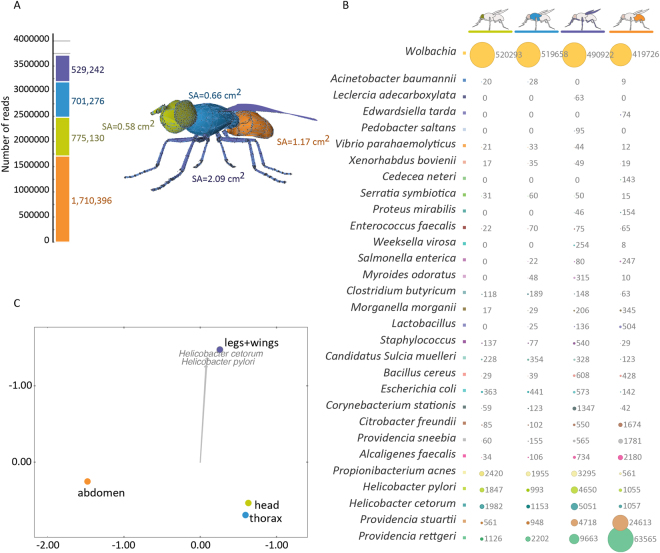Figure 6.
Microbiome of the four body parts. (A) A 3-dimensional model of a fly (composed of 11,421 triangles) was used to calculate the approximate surface areas (SA) of four body parts, indicating that the legs + wings, despite small volume and mass, have the largest surface area. The stacked bars indicate total number of reads for each dissected body fraction, showing the abdomen generated more reads than other body parts, most likely because it contains the major part of the intestinal tract and other organs. (B) Bubble chart of the top 30 bacterial species assigned to each of the four body parts of a blow fly. The endosymbiont Wolbachia sp. was detected in all tissues. Despite the tiny amounts of biological material recovered from legs + wings, the microbial diversity of this body part was found to be higher than other tissues. The bubble chart indicates presence of Helicobacter spp. in the blowfly, most prominently in legs + wings. This could be a potential route of dispersion of this pathogen to humans and animals. See Figure S11 for alpha-diversity of the four body parts, Table S8, and Figure S13 for results obatained with Cosmos ID metagenomics software package. (C) PCoA of the microbiome of the head, thorax, abdomen and legs + wings, showing separation of legs + wings dataset is mainly driven by presence and abundance of Helicobacter species. See Figure S12 for genome-wide coverage of H. pylori with metagenomics reads of the four body parts. PCoA was generated using Bray-Curtis ecological index (stress = 0.80).

